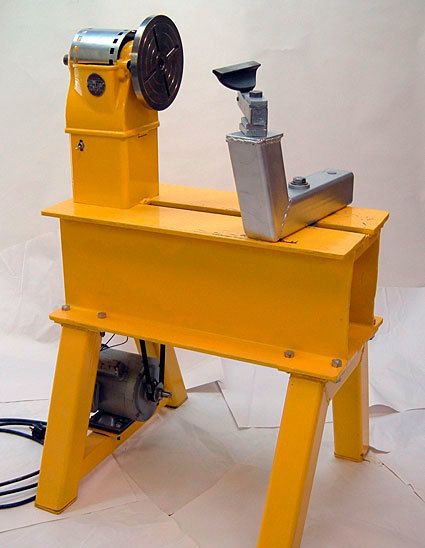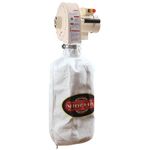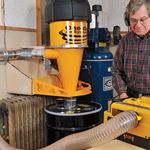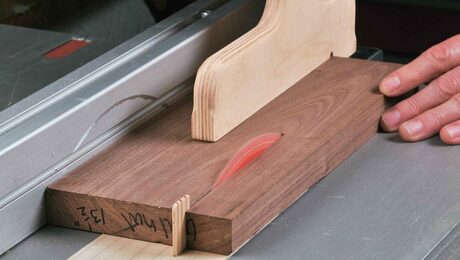Homemade Lathe on a Budget
Retired engineer builds a bowl-turning lathe from scrap parts and a headstock purchased on eBay
When George Archer decided to upgrade his Shopsmith lathe to something that could handle larger projects, he didn’t browse the tool catalogs. Instead, he built his own.
“It does great,” said Archer, a retired engineer from Savannah, Georgia, who cobbled together a heavy-duty bowl turning lathe from $100 of purchased and found parts. “So far, so good.”
What inspired Archer to build his own lathe rather than buying a commercial one? “Probably the $2,000 difference in cost,” he said. Another likely contributor is his engineering prowess. The hobby woodworker spent many years engineering parts for air-conditioning systems.
A machine from spare parts
The genesis of Archer’s homemade lathe was a Delta/Rockwell headstock, which he purchased on eBay for $40. That component is one of the most important elements on a lathe, and is responsible for transferring power from the motor to a turning blank through a series of belts and pulleys.
Once he had the headstock, Archer built the rest of the machine to fit using scrap steel salvaged from a construction site.
 The 30-in. bed is composed of two steel I-beams. The riser, which raised the headstock off the bed to increase the turning diameter to about 24 in, is made from 6-in. square structural steel tubing. And the base is made from 3-in. structural steel tubing welded together. The tool rest also is made from scrap steel, and an aluminum cover prevents Archer’s shirt sleeves from getting caught up in the headstock pulley.
The 30-in. bed is composed of two steel I-beams. The riser, which raised the headstock off the bed to increase the turning diameter to about 24 in, is made from 6-in. square structural steel tubing. And the base is made from 3-in. structural steel tubing welded together. The tool rest also is made from scrap steel, and an aluminum cover prevents Archer’s shirt sleeves from getting caught up in the headstock pulley.
“It’s heavy enough so it doesn’t walk across the floor when I put something unbalanced on it,” Archer said.
The pulley system is another essential component of a lathe. Archer designed the pulleys so the lathe could work at three speed settings: roughly 300 rpm, 600 rpm, and 800 rpm. While not as versatile as most commercial lathes, Archer says the three speeds are adequate for the kind of work he does.
A small pulley on the 3/4-hp motor spins at about 1,800 rpm, and is connected by a belt to a larger pulley — spinning at about 600 rpm — housed underneath the bed on a jack shaft. The jack shaft also has a three-step pulley that connects by belt to a three-step pulley on the headstock. Manually moving the belt on the stepped pulleys changes the speed.
Going big
“I’ve owned a Shopsmith for many years and I’ve done a lot of turning on it. But it has limitations,” he said. “I wanted to turn bigger and more unbalanced things.”
Since completing the lathe a few months ago, Archer has turned a large-diameter platter as well as an architectural turning that he’s using to install a brass ship’s porthole as a window in his home.
Archer’s advice for other woodworkers interested in building a lathe from scratch: “A lathe is pretty simple,” he said. “But it helps if you know how to weld.”
 |
 |
| This architectural turning was constructed to install a brass ship’s porthole as a window in Archer’s home. | A large-diameter platter. |
Fine Woodworking Recommended Products

Shop Fox W1826

Starrett 12-in. combination square























Log in or create an account to post a comment.
Sign up Log in